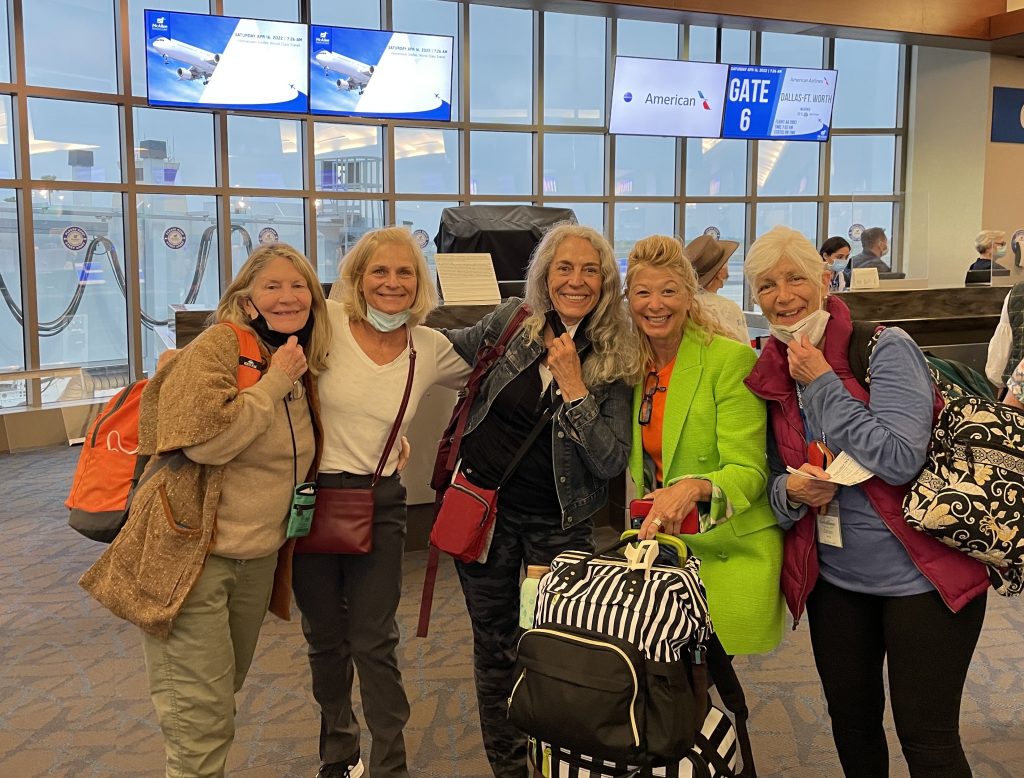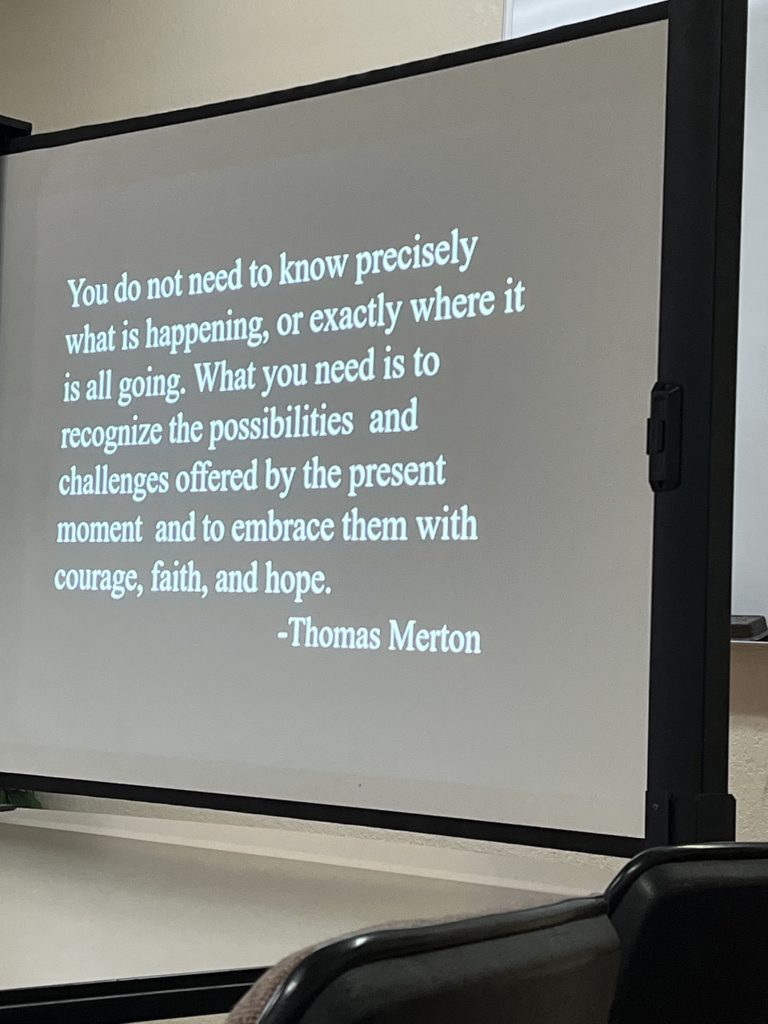Wrapping up. Reader alert – this is one of my longer posts as I struggled with editing. It all seemed too important to leave out.
Much of this trip was written about in quick paragraphs on Facebook because I didn’t have my computer with me so was operating off my phone. I hate typing on my phone. Right now I’m in re-entry mode, and even though I didn’t even leave the country, this re-entry seems as significant as when I came back from Ghana or Morocco or Greece, less the jet lag. It was an emotional, educational, frustrating, heart-filled week that I was fortunate to be able to spend with 10 other people who I feel blessed to call my friends now. The shared experiences and emotions made for quick bonds and goodbyes were tearful, sad and stretched out to the airport gates in Dallas, where 5 of us parted for other parts of the country. The five of us with early departures decided that it made more sense to sleep at a hotel near the airport so said our goodbyes the night before. It was nice getting to tuck into comfy beds after showers that had continual hot water and good pressure and being able to flush toilet paper and not dispose of it in the bin by the toilet. That being said, our accommodations in the “dorm” were comfortable and cozy and I think we all adapted quickly as we were familiar with the accommodations from previous volunteer trips. There was an option to stay in a nearby motel, and I had signed up for that option, thinking I’d have more alone time for writing, but when I saw the dorms with the large open living room/kitchen with sleeping rooms on either side of it that housed lines of sturdy bunkbeds, I asked if I could move out of the hotel and into the dorm. It felt familiar – no frills on the lodging, just beds and showers with weak water pressure and iffy hot water. Carolyn, Barbara (our leader) and I were in one bunk room and Sandy and his wife Gail in the other. The remaining 6 were at a the motel, 15 minutes away.
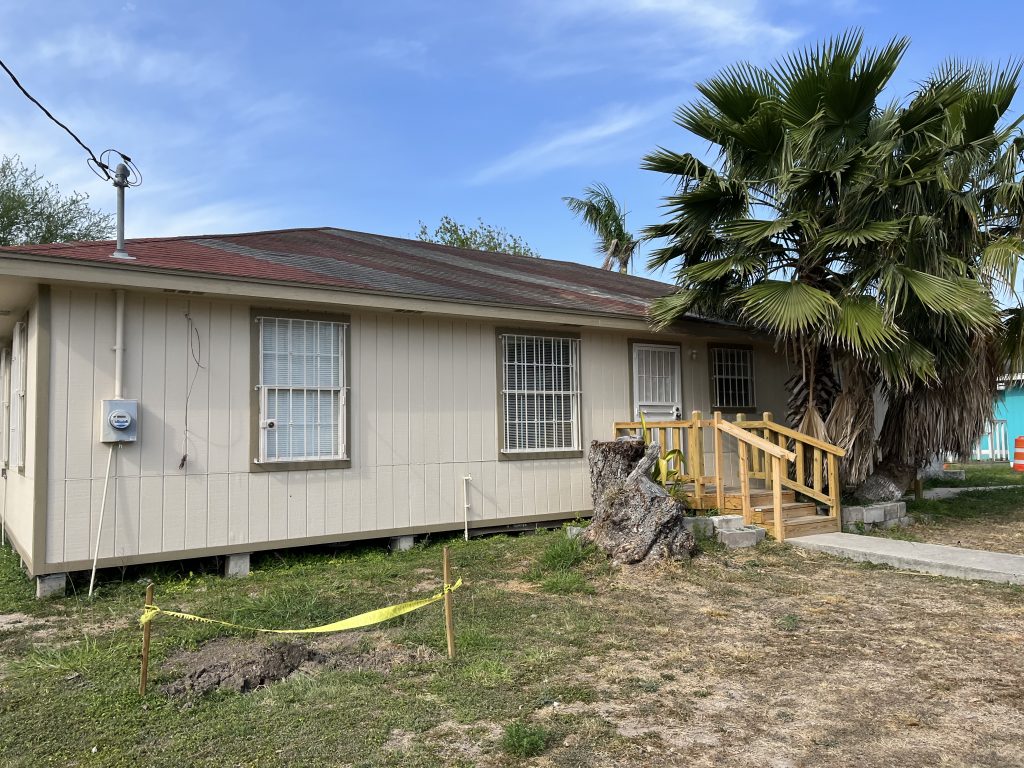
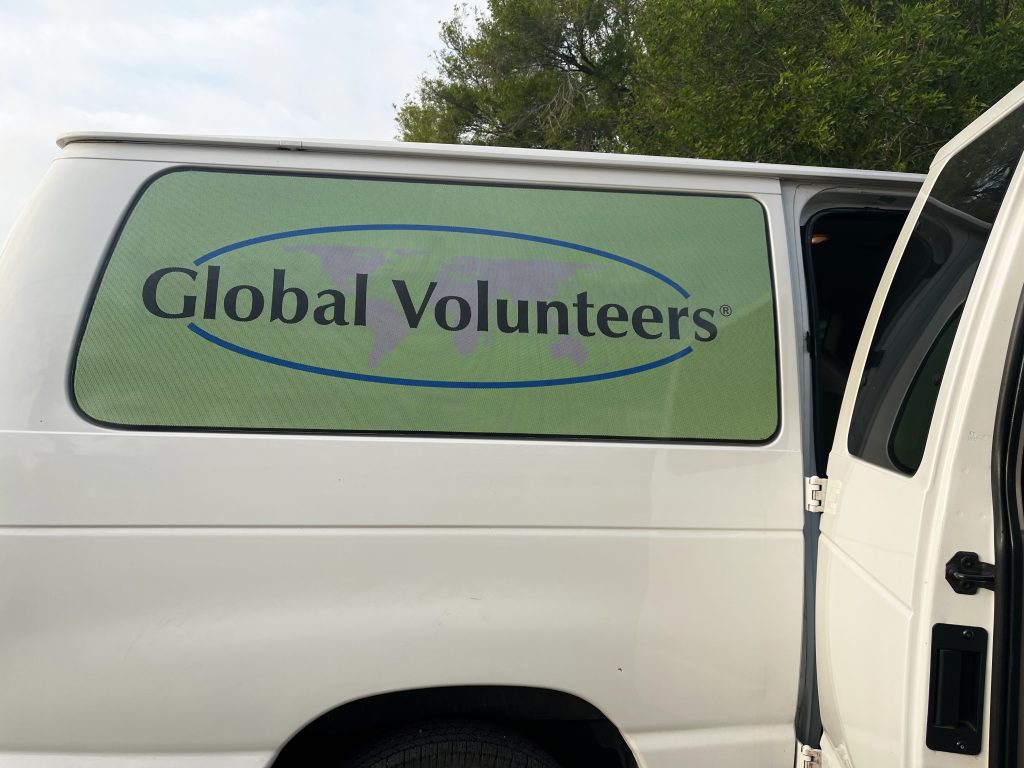
When I think about the past week, it is the faces that come to mind – the worried faces of the parents with the sick baby who Carolyn and I tried to figure out Tylenol dosages for because she was under two and dosing at that age was “ask a doctor.” I think of the woman holding the word search book we had found for her, anxious to get started on her “learning English” or the kids who were so adept at entertaining themselves with a stack of cards or the blocks of a jenga set that became building materials for houses and roads. I think about women in sweat pants rolled down several turns at the waist so they’d fit and over-sized tee shirts because those were the only sizes we could find for them but they didn’t seem to mind. They were just happy to have a new set of clean clothes. I thought about the woman with the zipper of her jeans pulled all the way down to accommodate her expanding pregnant belly and I hoped that someone would find her some of the desperately needed, over-sized sweats. I think about the moms seated in a cluster of folding chairs near other moms, trying to stay awake while watching their kids, in-between brief moments of closing their eyes. Sleep couldn’t have come easily after the mats were rolled out at night in a room the size of a gymnasium (on the days we were there, I’d estimate there were 150 to 300 people, the busiest day being our last). How do you keep your toddler on the mat next to you? How do you keep your baby from crying when they hear the cries of other babies? How do you answer the questions your children continually asked of “when do we get to go home?” How do you try not to look worried, afraid or anxious in front of your children who are counting on you for everything? I think about the beautiful 9 year old girl with long brown pigtails from Guatemala who was going to Atlanta with her mom, younger sister and older brother, to be with their dad who was already there. She told me she wanted to be a police officer because she wanted to help others. She was smart. She helped her mom who couldn’t read and helped translate for her.
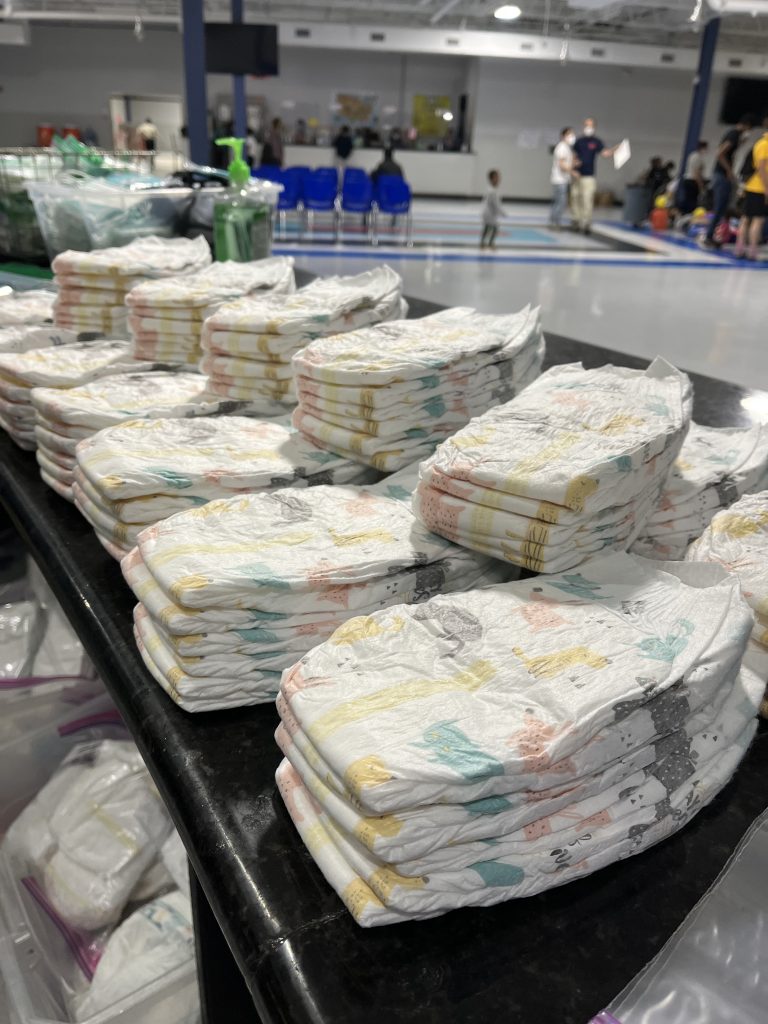
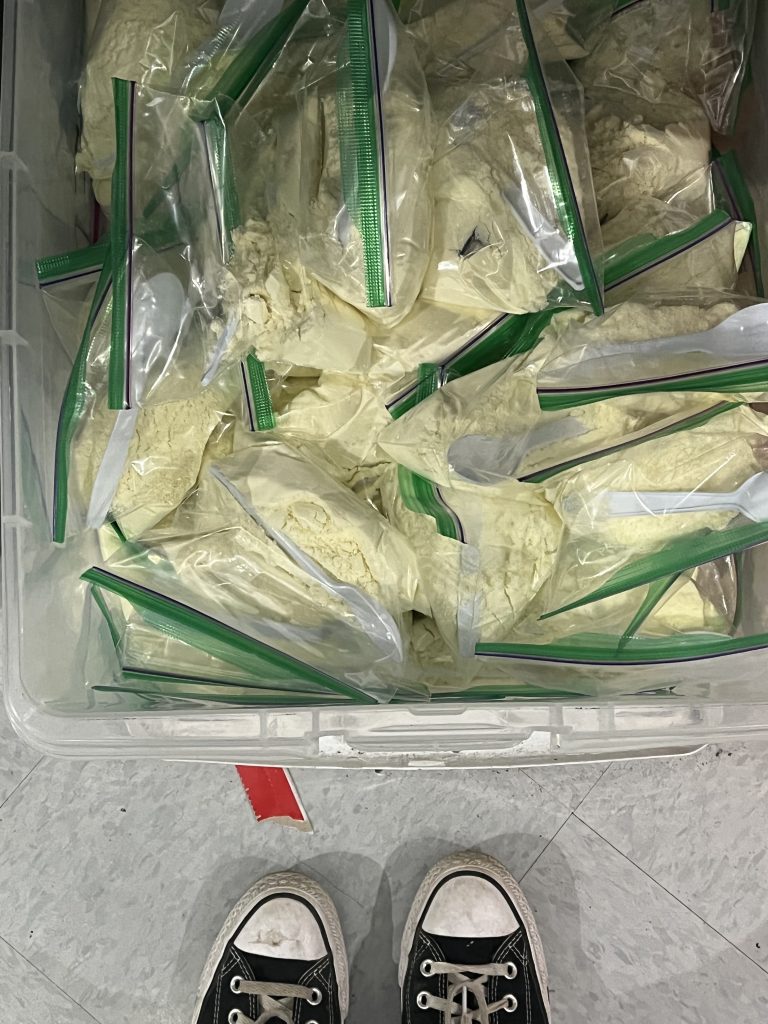
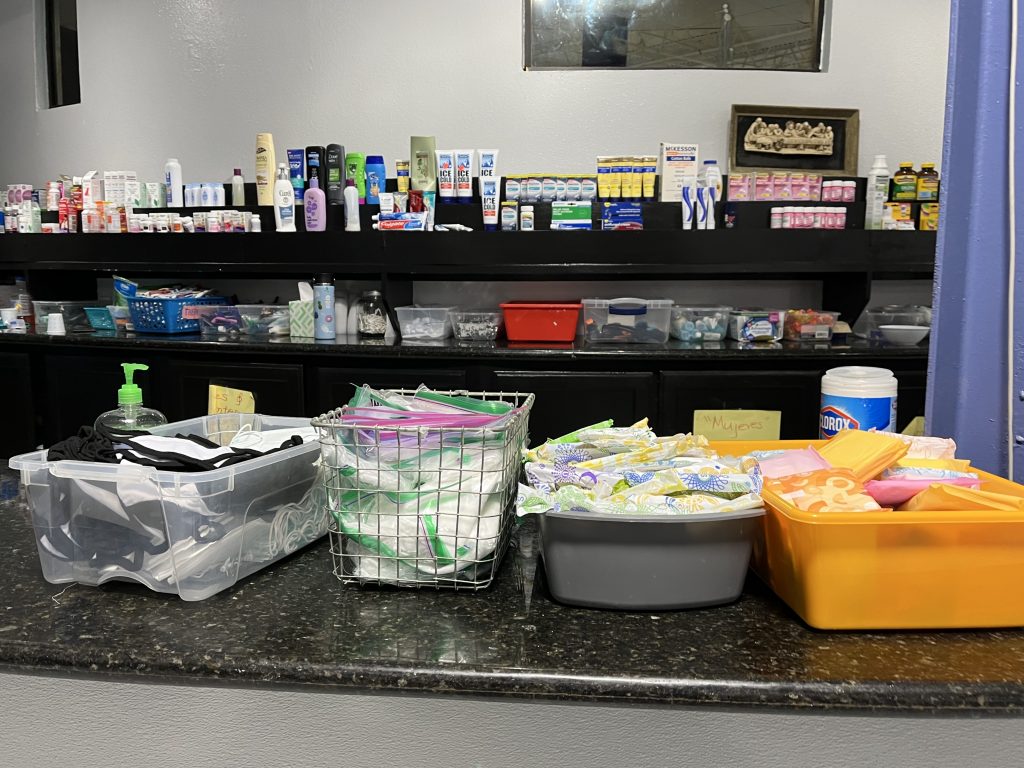

Although we had several educational sessions during the course of our stay, it’s an extremely complicated issue and I realized how much I don’t know or understand. Ann Cass, the director of Projecto Azteca, helped educated us on the complicated border issues as well as the needs of underserved areas of Hidalgo County, where 33% are living in poverty. What we learned was difficult and eye-opening and I had to continually remind myself that I was in the United States, and not a developing country. Even with explanations in my native tongue, I’m still not sure I totally understand the process that the refugees we met had gone through and the steps that were still ahead of them. How were they able to process and understand the enormity of it all when English wasn’t even their first language? What I do know is that the people we volunteered with all came through legal check points – they did not swim across the Rio Grande that separates parts of the United States from Mexico, nor did they climb over or dig under the large imposing wall. They came legally and all had sponsors who had agreed to house them temporarily as well as provide financial aid to pay for their journey to locations all over the country. They had traveled very long distances, mostly from the Northern Triangle of Central America – Guatemala, Honduras and El Salvador. I met one family who had made the journey from Peru, and heard about families from Cuba and different parts of Africa. I only met one family traveling from Mexico.
I was reunited with Dee Dee and Mimi, who I met while volunteering in Morocco. It was a very special reunion for the 3 of us and I have no doubt there will be many more. Dee Dee reminded us that although they had traveled for weeks or even months, the people we were helping had only just begun their journey and still had a very rough road ahead. The factors are complicated and I know the words “immigration” and “refugees” and “border control” are political hot buttons, making the issues even more inflammatory. Immigration reform is necessary and long overdue but my focus this past week was on the humanitarian leg of the situation – the people and their struggles, the children and their fears, the parents and their remarkable resilience – helping with the most basic of needs while trying to restore human dignity to this group of people.
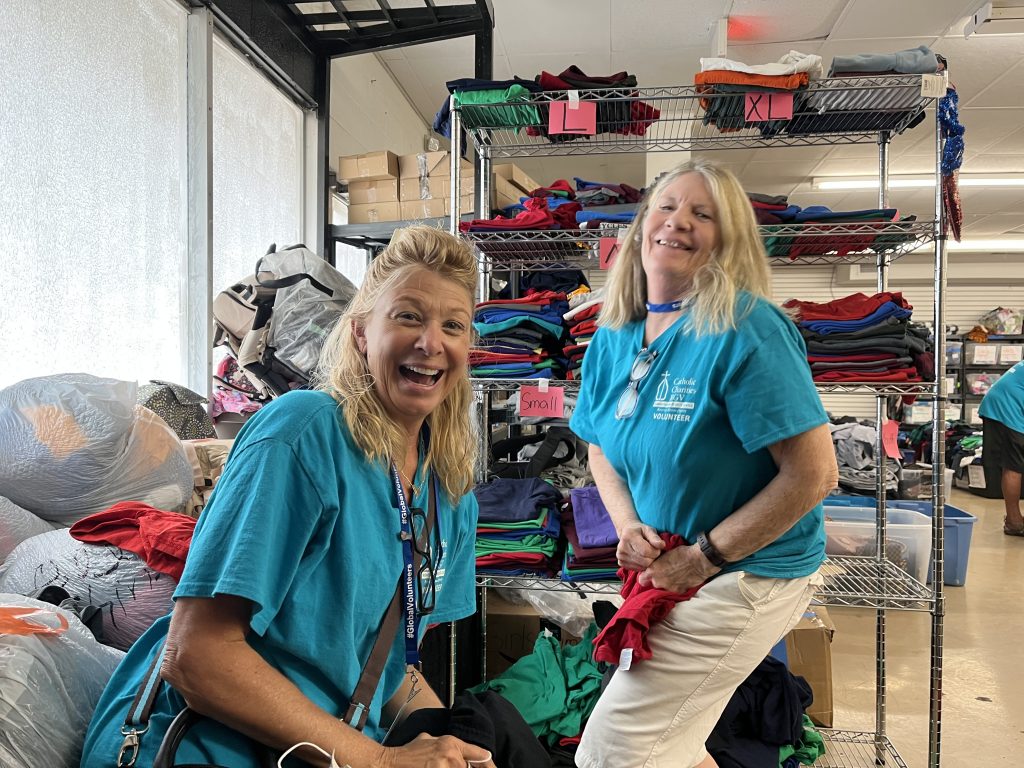
Midway into the week, I got a text from my daughter with a photo of her almost 5 year old son, at a restaurant sitting behind a glass of orange juice bigger than his head. Given the many children I had played with earlier that day, many my grandson’s age, the photo gave me pause. My grandson is on spring break with his parents and two year old sister. He’s almost 5. He won’t have to worry about where he’s going to sleep when he gets home or if he’ll have a home to go to. He doesn’t have to worry if kids will understand him at school because he speaks a different language. He doesn’t have to worry if his parents will even be able to find a school for him to attend. I looked at that photo, like so many she texts to me, but the timelines of it held so much weight. “Hug your kids, I responded…then hug them some more and be grateful for the name of the country that’s written on the front of your passport.” She understands because she’s volunteered in Peru with me. The big poster on the wall in the Syrian/Afghan refugee camp where I volunteered, kept coming to mind:
“No one puts their children in an unsafe boat in dangerous waters unless the water is safer than the land.”
And to that I’d add my own words,
“No one walks with their children through dangerous countries, with only the clothes on their back, and not knowing what they will be waling into, unless the place they are leaving has become too dangerous to stay.”
Our group also volunteered with Projecto Azteca – a non-profit self help construction company that serves the underserved populations of Hidalgo County. It was though this organization that Ann Cass was the director of, that gave some of us the job of painting the house of the elderly couple in Mercedes, TX, a half hour away from where we were staying. This is an organization that focuses on the colonias – the unincorporated and rural areas of the county. The families in need put their own sweat equity into the homes built. Because this couple was elderly and the wife somewhat immobile, we were able to provide the “sweat equity” hours for them. It was hard work in hot weather on rickety ladders with a lot of trash and dogs to work around, but I’m proud of the work our team of 5 accomplished. We didn’t completely finish the painting but were about 85% done when we ran out of time. We skipped the 105 degree day due to safety issues. Sore neck and shoulders aside, and still picking random splatters of paint off of my arms and hands, I’d do it all over again in a heartbeat. It was such a good, supportive group – holding ladders for each other becoming just as important as the laughter we shared to get us through the job. We all gained just a little more respect for soffits, joints that need caulk and the difficulty of painting a light color over bright blue paint.
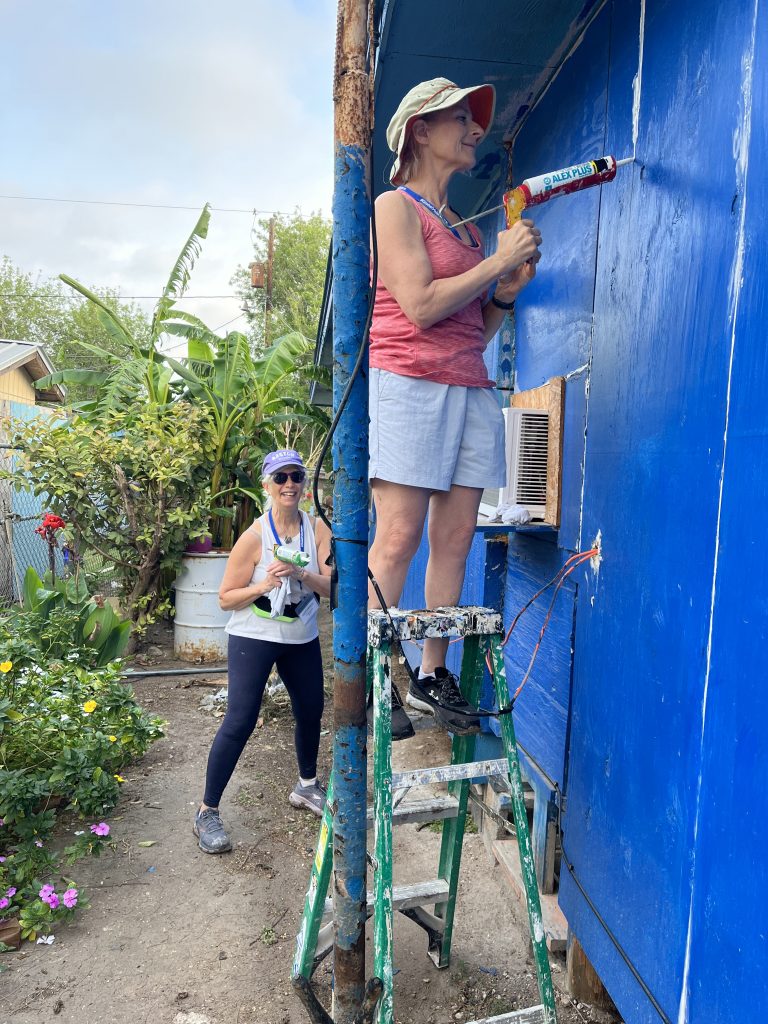
On our last afternoon, we drove around in search of a section of the wall that we could get close enough to touch. It was an odd request that we gave our director, but one that felt very important to all of us. Although we had all seen photos of the wall, that wasn’t enough. Standing by such an imposing and daunting man-made structure was emotional on so many different levels. We saw where the wall ended in one spot, butting up to a 3 foot chain link fence, obviously the spot to cross if one was making an illegal crossing into the US. We also saw ladders. The ones who chose to cross in that manner would likely be picked up in the towns that were close to the wall. There was a new housing development next to one of the portions of the wall we drove by, their view being of the wall itself. The development was called “Esperanza” or “Hope” in English. The irony was striking. Being able to see the iron structure that separated “us” from “them” felt like a necessary part of all of our journey and was timely to see on our last afternoon after having learned more about policy and procedure. Now we had faces and personal stories to accompany it.
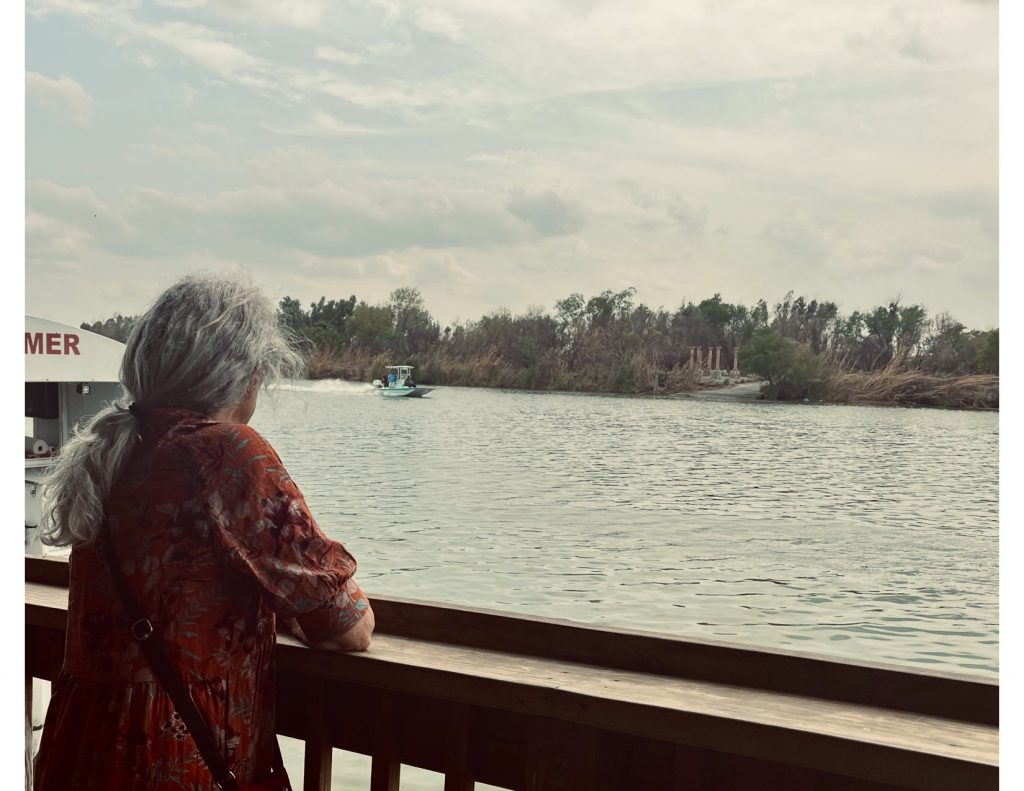
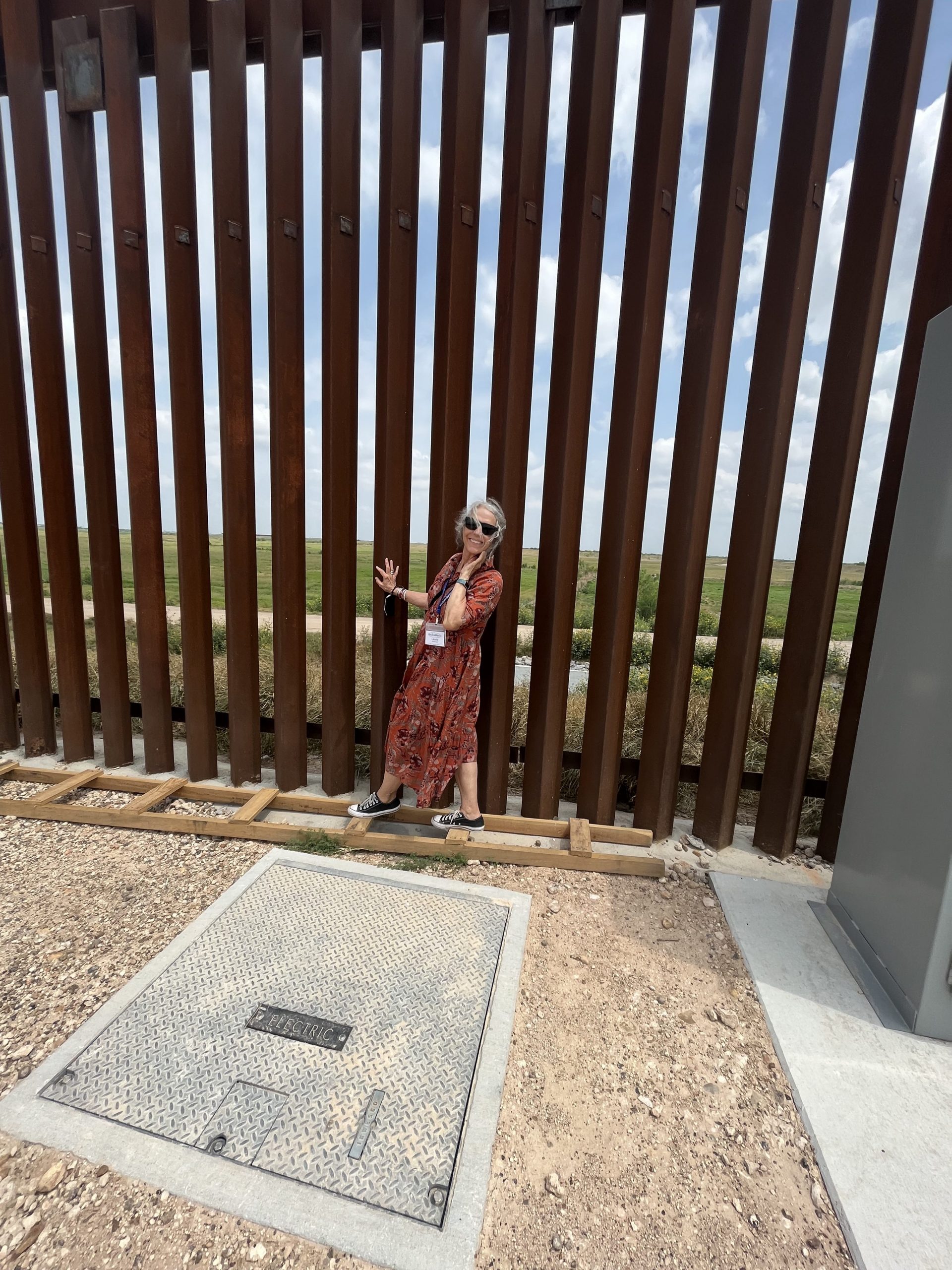
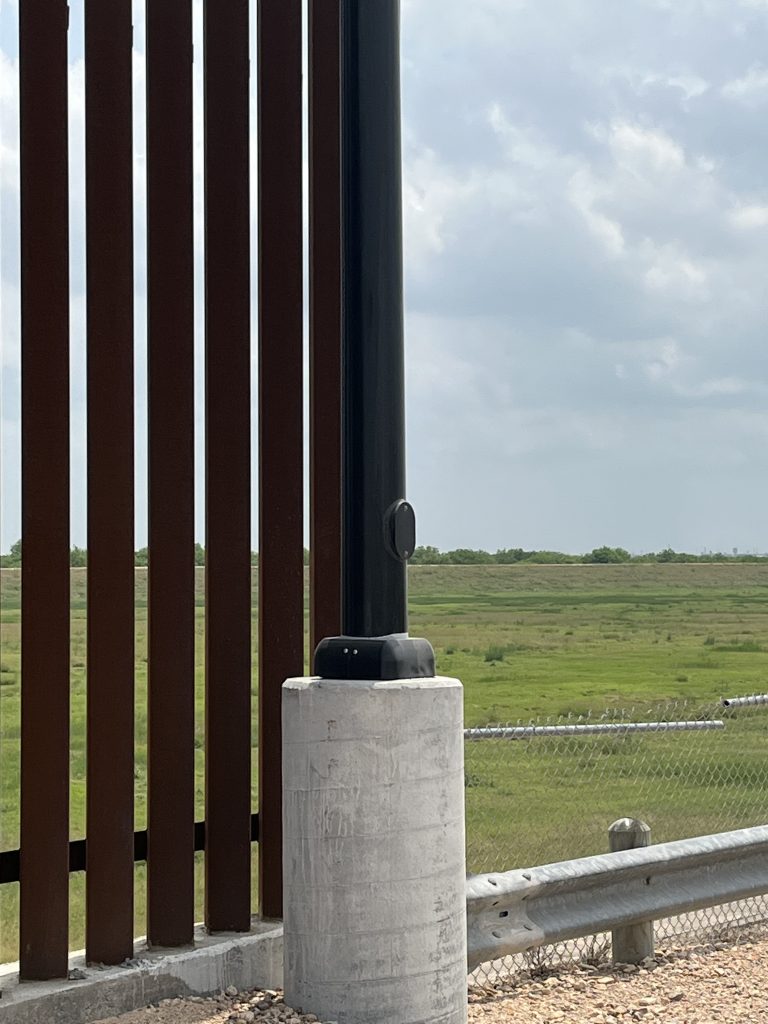
While waiting at the airport in McAllen for our flight to Dallas, I saw a mom and her three boys, who looked to be in the age range of 4, 6 and 8. The boys were all holding hands and looked both tired (it was 6:30 am) and nervous. The mom was making her way over to a small coffee stand for snacks with all 3 in tow. I saw her purple plastic envelope with the papers that all the adults at the respite center had. I noticed it because on one side of the stack of papers inside the translucent envelope, was a sign that in big letters said, “ I DO NOT SPEAK ENGLISH….” followed by a few other sentences that I was never close enough to read. The boys had bright yellow blankets that I had also seen at the respite center. When they made their way back to their chairs with their snacks, I went over to her and told her I had been volunteering at the respite center the past few days. I asked her the same questions I had asked so many – Where are you from? Where are you going? When did you arrive? And in Spanish she told me she was from Ecuador and was going to Brooklyn, where she had family. She and her boys had been at the respite center for 4 days. I wished her buena suerte and with those words, she reached up and hugged me. This is why I do this work. I get far more out of it than I ever can give.
Out of our group of 11, 5 came down with a bug, one necessitating a trip to the hospital emergency room where I sat with her in the small, curtained off room in the ER while she received fluids through an IV. It was early in the morning, and I had only had a couple of house of sleep because we had spent part of the evening earlier at a quick care clinic. When it was decided that she needed more than what the quick care clinic could provide, we left in the early morning hours to go to the ER. In my haste, I had thrown on a sweater over my pajamas and grabbed my shoes and backpack. Only in the light of day, as we were leaving the hospital, did I realize how ridiculous I looked and taking the extra 2 minutes to change into clothes would have been a good idea. We also had one of our team break her ankle when she fell into a small hole in the parking area where the van was parked. This same person had a tooth extracted on day 2. There was so much concern and support offered to those with stomach issues, sore throats or learning how to maneuver crutches. The genuine love and concern this group of people showed one another tugged at my heart more than any other volunteer trip I’ve been on. I miss them, every one of them, already. This morning I woke up with a slight fever and sore throat, catching whatever it was that was going around (fortunately, not Covid). It was impactful work we were doing and I know that plays as much of a part in our physical well being as the emotional.
Now that I’ve returned to the comforts of home, is when the real work begins. Education about immigration needs to continue and stories that have faces attached to them, need to be told. My hope is that my words will be read with the emphasis on the humanitarian side of this and not the political side. They are difficult problems and we need to be realistic, but the importance of not losing site of the individuals who make up the numbers, is essential. The fact that today is Easter, a day of transformation and promise, whether recognized through a religious platform or not, has not gone un-noticed by me. It was a short week with long days and was nothing short of incredible. It will take time for me to absorb the enormity of it while determining how I can make productive use of the emotions I’m feeling now.
Thank you to Global Volunteers and our incredible leader, Barbara, for bringing all of this into my life.
